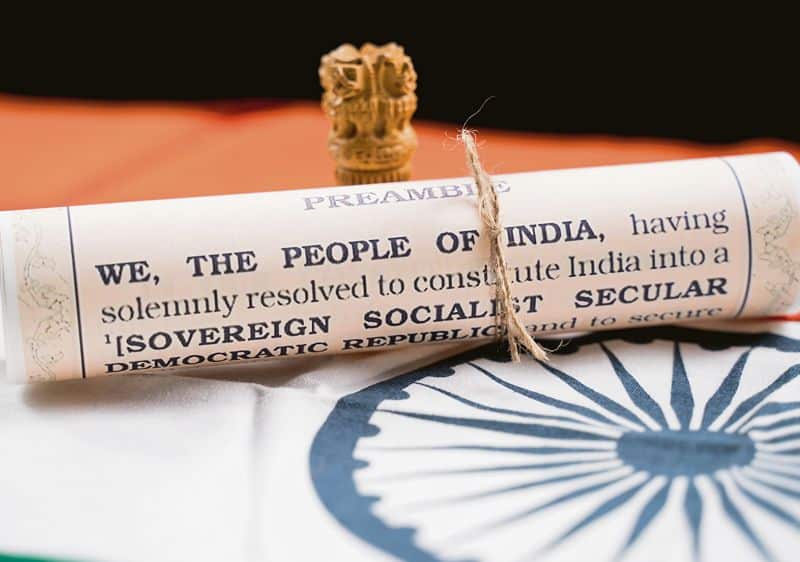About Basic Structure Doctrine
- In 1973, a 13-judge Constitution Bench of the Supreme Court (SC) ruled in Kesavananda Bharati v. State of Kerala that Article 368 of the Constitution does not enable Parliament to amend the basic framework of the document.
- The historic ruling came to be known as the “basic structure” doctrine — a judicial principle that the Constitution has certain basic features that cannot be altered or destroyed by amendments by Parliament.
- Over the years, various facets of the basic structure doctrine have evolved, forming the basis for judicial review of Constitutional amendments.
- How did it evolve?
- In I.C. Golak Nath v. State of Punjab (1967), the SC held that Parliament could not curtail fundamental rights guaranteed under the Constitution.
- The then government enacted a series of constitutional amendments following successive rulings against it.
- The 24th Constitutional (Amendment) Act, 25th Constitutional (Amendment) Act, and 29th Constitutional (Amendment) Act gave Parliament uncontrolled power to alter or even abolish any fundamental right.
- The Kesavananda Bharati case was the culmination of a conflictbetween the judiciary and the then-Indira Gandhi-led government.
Kesavananda Bharati vs. State of Kerala (1973):
- The case is also known as the Fundamental Rights Case.
- In 1970, Kesavananda Bharti, the head of a math in Kerala, challenged the Kerala Land Reforms Act related to restrictions on the management of religious property.
- The case was heardby the largest-ever Constitution Bench of 13 judges.
- It upheld the validity of the 24th Constitutional Amendment Act (1971) and stated that Parliament is empowered to abridge or take away any of the Fundamental Rights.
- As per 24th C.A.A., Constitutional Amendments were not considered laws under Article 13. This amendment gave unlimited power to the Parliament to amend or repeal any part of the Constitution of India.
- However, the Court laid down a new doctrine of the ‘basic structure’ (or ‘basic features’) of the Constitution.
- The SC in the Kesavananda Bharti case held that although Parliament has the power to amend any part of the Constitution, it could not use this power to alter or destroy its “basic structure.
- The Court propounded what has come to be known as the “Basic Structure of the Constitution”.
- Thus, this landmark judgment meant that every provision of the Constitution could be amended, but these amendments can be subjected to judicial review to ascertain that the Basic Structure of the Constitution remains intact.
- The Parliament reacted to this judicially innovated doctrine of ‘basic structure’ by enacting the 42nd Amendment Act (1976).
- This Act amended Article 368 and declared that there is no limitation on the constituent power of Parliament, and no amendment can be questioned in any court on any ground, including that of the contravention of any of the Fundamental Rights.
- However, the SC in the Minerva Mills case (1980) invalidated this provision as it excluded judicial review, which is a ‘basic feature’ of the Constitution.
- Again in the Waman Rao case (1981), the SC adhered to the doctrine of the ‘basic structure’ and further clarified that it would apply to constitutional amendments enacted after April 24, 1973. It is the date of the judgement in the Kesavananda Bharati case.
Which features of the constitution constitute the Basic Structure?
The components of the Basic Structure provided in the constitution have been recognized by the judiciary in various cases to date. Some of these components are
o Supremacy of the Constitution
o Sovereign, democratic and republican nature of the Indian polity
o Separation of powers between the legislature, the executive and the judiciary
o Judicial review
o Parliamentary system
o Rule of law
o Principle of equality
o Free and fair elections
o Independence of Judiciary
o Limited power of Parliament to amend the Constitution
Q1: What is Article 13 of the Indian Constitution?
This Article talks about the legality of pre-constitutional and post-constitutional laws. This article states that if any law violates the provision of fundamental rights, then that law will be void to the extent of the violation. This Article plays an instrumental role in ensuring that parliament and the state legislature shall be bound by fundamental rights while exercising their law-making power.
Source: If I have to do something about basic structure doctrine, I should do it through my judgments: CJI
Last updated on November, 2025
→ Check out the latest UPSC Syllabus 2026 here.
→ Join Vajiram & Ravi’s Interview Guidance Programme for expert help to crack your final UPSC stage.
→ UPSC Mains Result 2025 is now out.
→ UPSC Notification 2026 is scheduled to be released on January 14, 2026.
→ UPSC Calendar 2026 is released on 15th May, 2025.
→ The UPSC Vacancy 2025 were released 1129, out of which 979 were for UPSC CSE and remaining 150 are for UPSC IFoS.
→ UPSC Prelims 2026 will be conducted on 24th May, 2026 & UPSC Mains 2026 will be conducted on 21st August 2026.
→ The UPSC Selection Process is of 3 stages-Prelims, Mains and Interview.
→ UPSC Result 2024 is released with latest UPSC Marksheet 2024. Check Now!
→ UPSC Prelims Result 2025 is out now for the CSE held on 25 May 2025.
→ UPSC Toppers List 2024 is released now. Shakti Dubey is UPSC AIR 1 2024 Topper.
→ UPSC Prelims Question Paper 2025 and Unofficial Prelims Answer Key 2025 are available now.
→ UPSC Mains Question Paper 2025 is out for Essay, GS 1, 2, 3 & GS 4.
→ UPSC Mains Indian Language Question Paper 2025 is now out.
→ UPSC Mains Optional Question Paper 2025 is now out.
→ Also check Best IAS Coaching in Delhi

















